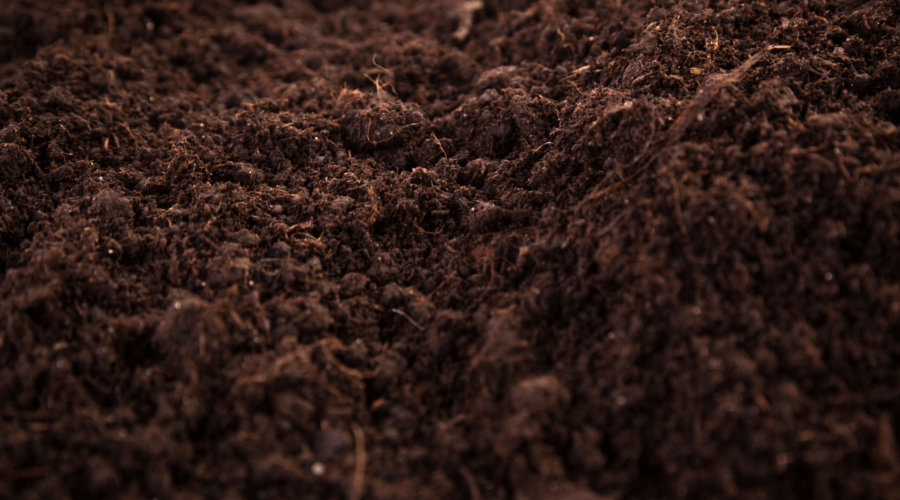Terra Preta do Indio soils are the subject of everyone’s attention: their nutrient and carbon concentration is exceptionally high, the soils are thick and it has been preserved for several centuries. Learn more about advantages of this black earth and how it can be produced today.
Advantages of biochar-based Terra Preta
- Increased seedling growth rates and yield stabilization
- Reduction of expenses for irrigation, fertilization, herbicides, fungicides and pesticides
- Moisture retention and reduction of water consumption
- Carbon neutral alternative to peat, perlites, coconut fibers, etc.
Degree of Development
There are natural and anthropogenic deposits of black earth all over the world. The historical anthropogenic black soil ‘Terra Preta’ is composed of human waste such as pottery shards, bones and fishbones, organic cooking scraps, as well as river sediments, human and animal feces. Another important ingredient is charcoal, which came from fireplaces and was added together with fertilizing ash. These ingredients were spread in the immediate vicinity of human dwellings. Thereby, the very structure- and nutrient-rich composition leads to a high fertility of the soils even after centuries.1Glaser, B., Haumaier, L., Guggenberger, G. et al. The ‘Terra Preta’ phenomenon: a model for sustainable agriculture in the humid tropics. Naturwissenschaften 88, 37–41 (2001). https://doi.org/10.1007/s001140000193
Based on these findings, various recipes have been developed to produce Terra Preta substrates on a large scale. Classic ingredients still represent shredded green waste, biochar, rock flour, organic kitchen waste, ash as well as natural nutrient/mineral sources.2Gerald Dunst „Kompostierung und Erdenherstellung“ 1.Auflage, 2015, Verlag Sonnenerde – Gerald Dunst Kulturerden GmbH, Riedlingsdorf
The high fertility is a consequence of a fitting carbon nitrogen ratio in the soil which creates a perfect living environment for beneficial microorganisms. The blackness of Terra Preta derives from the high carbon content, which is present in the form of permanent humus.
For applications in the corporate sector, the price is usually still the biggest obstacle. In high-priced areas such as golf lawns and bonsai substrates, Terra Preta substrates are already economically applied today. In the end customer segment, on the other hand, the use of Terra Preta substrates is much more common, and distribution in the retail sector is advanced as well.
For large-scale applications, biochar-based Terra Preta substrates are not yet common. So far, only a few Terra Preta substrates with standardized properties are available for professional use. For these substrates, salinity, pH, nitrogen content, ammonium, nitrate, P2O5, K2O, magnesium, sulfur and organic matter contents are indicated. These substrates mainly contain green waste or sieve screenings from composting facilities. Smaller proportions contain organic NPK fertilizers such as manure, wood or coconut fibers, clayey soil or clay, loaded biochar, rock flour or zeolite, partly animal by-products (sheep wool, horn shavings) as well as finely granulated broken brick.
Application
Terra Preta substrates can be applied directly to the soil.
When using biochar in soil substrates, it is never used pure, as it would extract water and nutrients. The biochar must either be inocculated with a fertilizer or co-composted for several weeks with the applied compost portion of the substrate.
Furthermore, when using biochar in soil substrates, it is important to carefully select the biochar, as each biochar is different due to the source materials and the method of production.
Dosage
For new plantings, Terra Preta Substrate is used pure or mixed with soil in a ratio of 1:1. If Terra Preta Substrate is to be used in seed furrows, it is applied in a ratio of 2:1 or 1:1 on grown soil.
For the dosage of the biochar, current suppliers recommend 3-15% by volume depending on the plant species.
Approval & Certification
For home use, some of the substrates have a FSC certification and/or an organic certification in accordance with the EU-organic production-regulation. Substrates for horticulture gardening or landscaping are also available in organic quality, which can be assured by a FiBL listing, for instance.
Substrates with biochar are sometimes subject to strict testing guidelines, specifically in the event that they are used in food production. A few soil-producing companies therefore offer Terra Preta substrates with quality certification of the biochar used, for example EBC certification. In this respect, the EBC-Agro certification is recommended for conventional farming and the EBC-AgroBio certification for organic farming.
Biochar causes long-term and stable carbon storage, which means that the use of Terra Preta leads to the formation of negative emissions and CO2 removal certificates (CORC) can be sold.


Sources


